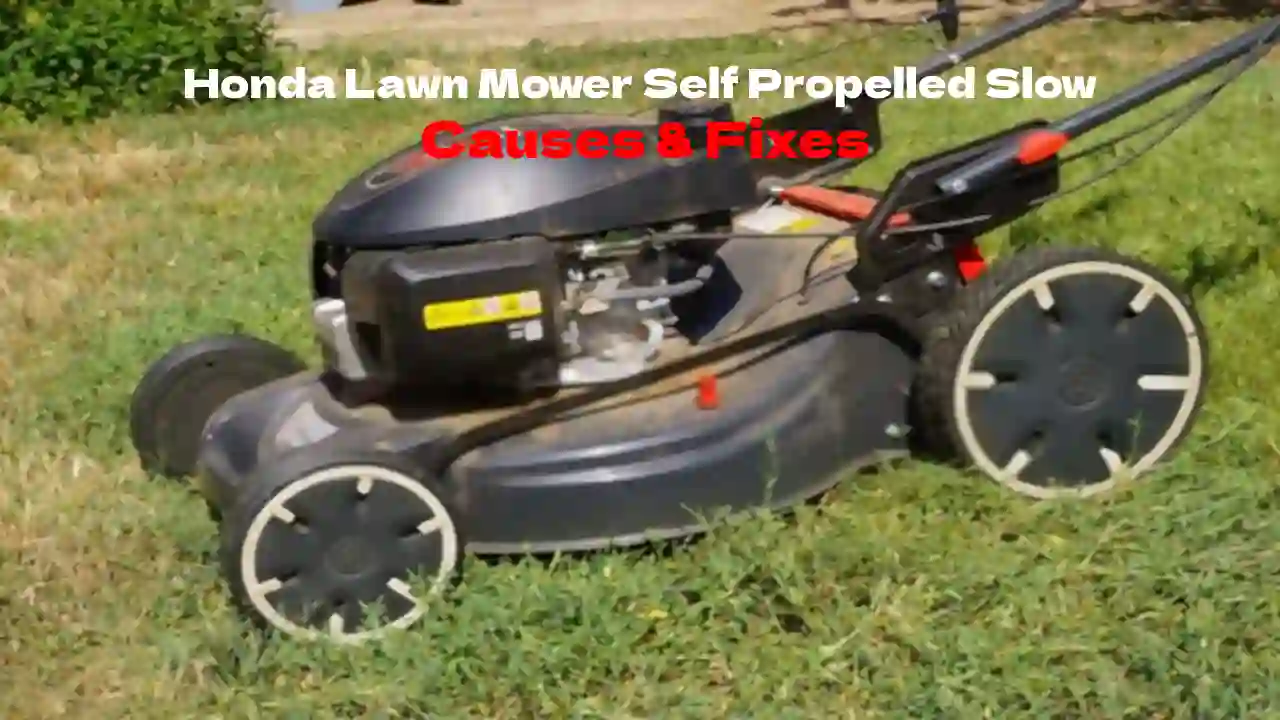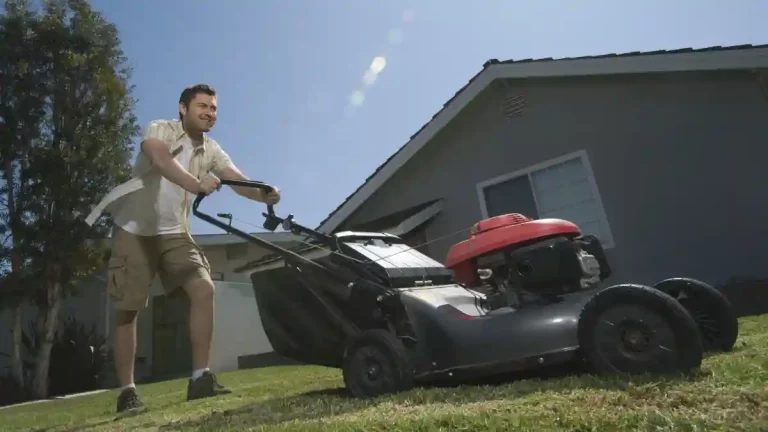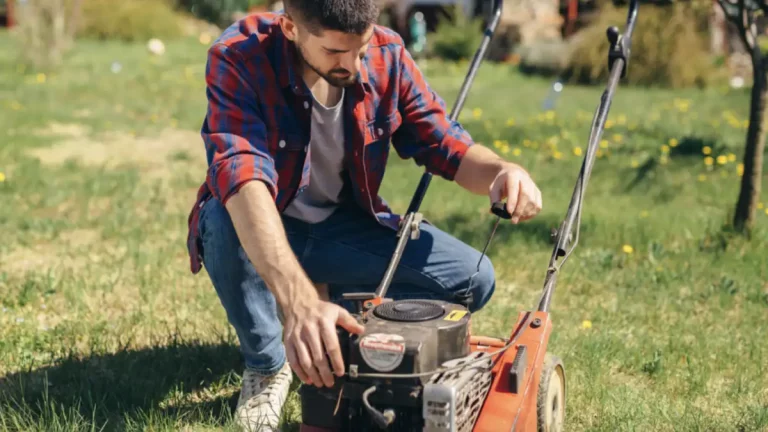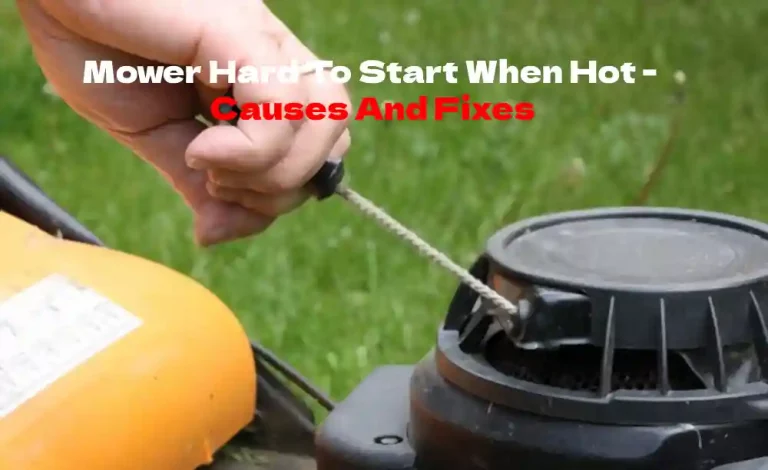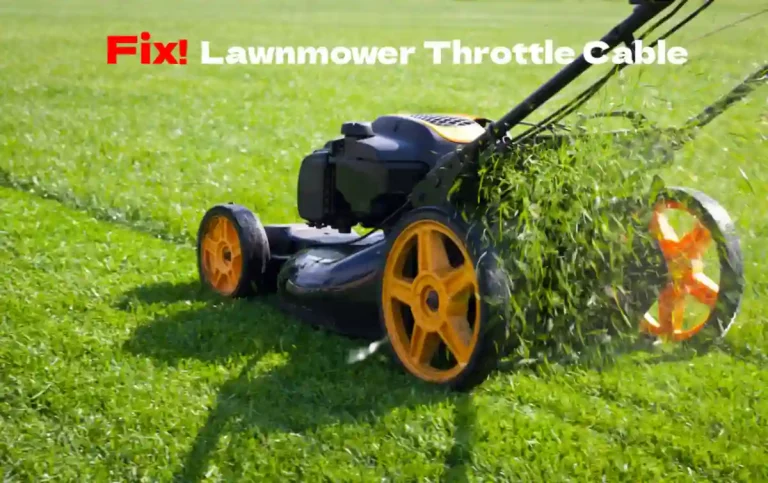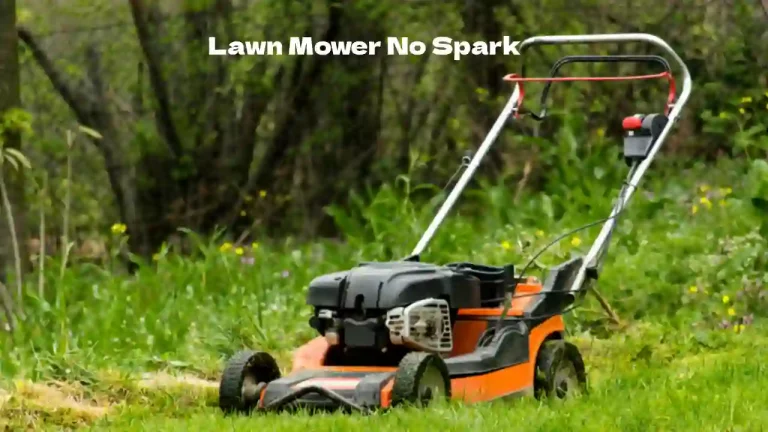One of the best inventions to reach the world of garden maintenance are lawn tractors (in their various guises) and self-propelled walk-behind lawnmowers. These have taken the weekly drudge out of mowing the lawn and keeping it looking tidy. If the machine keeps working correctly, it is very satisfying to use.
A Self-Propelled lawnmower Lawn Mower going too slowly could be caused by
- There is an engine issue.
- The drive belt needs adjusting.
- The drive gears on the axle are worn.
- The drive cable is too loose.
- The drive pulley is old and needs adjusting.
- The transmission is faulty.
If you maintain the lawnmower correctly by servicing it regularly, it will give reliable service from year to year. Some problems may occur; however, the average owner can manage most of these.
Reasons a Honda Self Propelled Lawnmower Fails
Although the Honda self-propelled lawnmowers have a reputation for reliability, as with any engineered product, components wear and sometimes fail.
When this happens, the best way to trace the fault is to follow a set by step procedure, identify possible causes, and correct these as necessary.
Check the Honda Self Driving Lawnmower in the following order.
- There is an engine issue.
- The drive belt needs adjusting.
- The drive gears on the axle are worn.
- The drive cable is too loose.
- The drive pulley is old and needs adjusting.
- The transmission is faulty.
The Engine Is Not Producing Enough Power
Internal combustion engines need oxygen, gas, and spark to ignite the piston chamber. The subsequent expansion of gasses forces the piston down and ultimately the blades to turn and the drive mechanism to work.
If any of the three components is not present or is a lower value than required, the engine starts with reduced power output.
The first step in the diagnosing process is to confirm that these factors are not the issue.
There Is No Petrol, Or The Petrol Is Too Old
Check the petrol tank; fill it up and try again if it is almost empty.
If the Honda self-propelled lawnmower has been stored through winter, and petrol was left in the tank at the end of summer, it is possible that the liquid has changed consistency and has become “gummy.”
Gas contains ethanol, which is hygroscopic and absorbs water from the atmosphere. It causes an oxidation process that turns the gas into “gum .”It is very damaging to the lawnmower as it coats everything and causes blockages in the fuel filter, the gas lines, and the carburetor jets.
It also reduces the ignition qualities of the gas, which reduces the strength of the combustion process.
Both problems can cause a Honda Self Drive Lawnmower to drive more slowly.
Rinse out the petrol tank, check there are no blockages in the fuel filter or pipes, and clean out the fuel jets in the carburetor.
The Wrong Spark Plugs Or Damaged Spark Plugs Are Installed
The spark plug may be the reason for the Honda Self Drive Lawnmower running slowly.
Remove the spark plug from the cylinder and check the condition of the electrodes.
- Check the gap is set to the correct dimensions (These will be specified in the manual)
- Check the condition of the enamel plating. If this is damaged, replace the plug.
- Check the color of the electrodes. The different colors will indicate the following conditions.
| Condition | Colour | Possible Causes | Solution |
| Spark Plug Is In Good Condition | The electrodes have a grey, smooth deposit | The spark plug is in good condition | No action needed |
| The electrodes are fouled by carbon | The electrodes have a dry black film on them | Too much gas is entering the Honda Engine Piston chamber; This can be caused by a blocked or dirty air filter or if the engine is left running at idle speeds too long. You must run small motors at high revs to prevent the plugs from “fouling.” | Change plug to a higher temperature unit. Check the air filter. Don’t run the engine at idle for long periods |
| The plug is fouled with too much oil | The electrodes are covered in a Wet, black oily film, | It may result from the pistons, piston rings, or valves being out of specification. | Clean up the spark plug electrodes with an emery cloth and adjust the gap. If this condition returns, you will need to have the Honda engine checked. |
Check the spark plug is firing correctly.
- Use a spark plug tester to check the spark. Amazon Spark Plug Testers.
- If the spark plug is not firing correctly, buy a replacement.
The Self Propelled Honda Lawn Mower Drive Cable Is Stretched
A probable cause of the Honda self-propelled lawnmower driving slower could be the drive cable being misadjusted or stretched.
This cable is easy to adjust as Honda has provided a simple adjusting system. All you need to do is
- Undo the lock nut screw
- Turn the adjusting nut counterclockwise until the drive cable tension is increased sufficiently.
- If you increase the tension too much, it will start to act like a brake and work against the engine torque.
By trying various tensions, you will be able to find the correct adjustment, and your Honda self-propelled lawnmower should speed up.
The Honda Lawn Mower Drive Belt Is Out Of Spec
The Honda drive belts are made from a rubber composite and, as a result, can withstand the stresses and strains placed by the machine.
Despite this, the belts will stretch and break over a more extended period.
A stretched drive belt will cause it to start slipping over the drive mechanism, involving lots of vibration and noise. In the same way that a slipping clutch in a motor vehicle prevents it from accelerating, a slipping drive belt will cause the Honda lawnmower to move more slowly.
You can quickly check the belt by pressing the sides together at both ends of the belt. The more they wear, the more it will feel loose.
You can adjust the belt’s tension by following the steps in the previous point, and it should work for a while; however, ultimately, you will need to purchase a new drive belt.
The Honda Self Propelled Lawnmower’s Gears On The Axle Are Worn
If the problem did not rest with the engine or drive belt, you would now need to check the drive gear mechanism. There are two possibilities with these components, namely.
- Worn driveshaft pins.
- The gears in the drive axle are worn.
The driveshaft pins are known to fail on Self Propelled Honda Lawn Mowers, so it is worthwhile checking these components first.
When the drive pins of the Honda Self Driving Lawnmower fail, it disturbs the connection between the gears and axle, causing the machine to move more slowly or stop altogether.
New pins are available, and you should obtain a new set and replace them.
Check the gears, and in the unlikely event they are worn, you can purchase entire kits to replace them.
The Honda Self Propelled Lawnmower’s Drive Pulley Is Defective
The crankshaft converts the piston’s energy to a rotational force, which turns the blades and axles via a drive pulley.
If the pulley is worn or stretched, the gearbox won’t activate, and there will be no way to transfer the energy to the drive wheels.
It is difficult for the average DIY lawnmower operator to change this belt as it requires factory spec tools. Use a Honda lawnmower technician if this is the problem.
The Honda Self Propelled Lawnmower’s Transmission Is Worn
If you have worked through each of the steps listed above and the Honda Self Propelled lawnmower still moves slowly, or not at all, it may be that the transmission is running out of spec
use a Honda lawnmower technician to replace this.
Conclusion
Even though the Honda self-propelled lawnmower is designed to provide years of faithful service, components fail or eventually wear out. Honda has incorporated several possible adjustments and replacements that the average owner can perform.
If you suspect that the Drive Pulley Is Defective or the lawnmowers transmission is worn, you should seek the services of a trained Honda lawnmower technician to help you.

